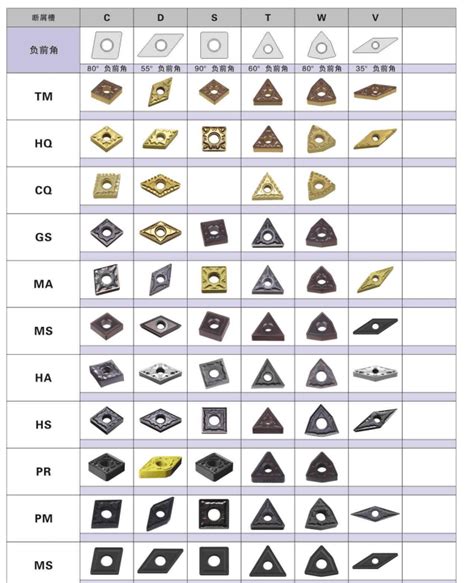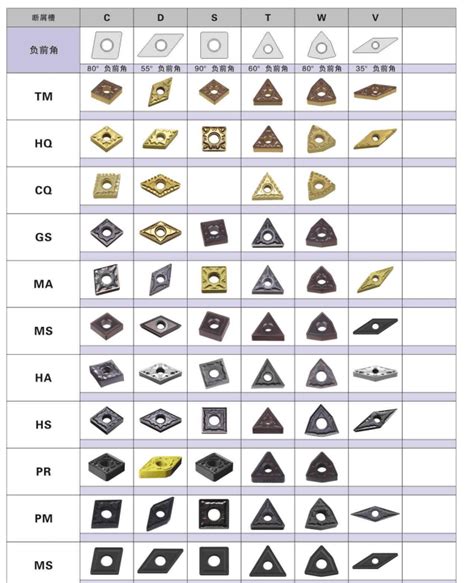cnc machine inserts for turning There are many variables that go into choosing the correct insert for your turning operations: insert shape, geometry, grade, and more. The goal is to select an insert that meets your requirements for quality and performance, while . I need to see if I can repair my SJB because the tail/brake lights are not working on the right side. Or do I just need to replace it. Any info would be awesome.
0 · types of machining inserts
1 · turning inserts chart
2 · sacher cnc cutting insert
3 · how to choose a turning insert
4 · groove turning inserts
5 · geometry of turning insert
6 · different types of turning inserts
7 · best lathe insert for turning
We have a vast range of 6061, 6063 and 5086 aluminum pipes that are in stock and ready to ship. We provide guaranteed on-time delivery. To get more details, call us at (985) 643-3340.
Selecting the right turning inserts involves considering multiple factors, including insert shape, grade, cutting edge length, nose radius, and .There are many parameters to consider when choosing turning insert. Carefully select insert geometry, insert grade, insert shape (nose angle), insert size, nose radius and entering (lead) angle, to achieve good chip control and machining .There are many variables that go into choosing the correct insert for your turning operations: insert shape, geometry, grade, and more. The goal is to select an insert that meets your requirements for quality and performance, while .The most common are turning inserts, groove-turning inserts, inserts for cutting hard materials, and thread-turning inserts. In addition, cutting inserts are available in many colors, which helps identify them.
types of machining inserts
turning inserts chart
Wiper inserts are capable of turning at high feed rates without losing the capability to generate good surface finish or chip breaking ability. Uniform component shapes. Note: Wiper insert is .Whatever your component or requirements for surface finish, find productive insert grades here that can withstand high temperatures and cutting forces and still retain their cutting edges. This CBN grade is your first choice for case and . Selecting the right turning inserts involves considering multiple factors, including insert shape, grade, cutting edge length, nose radius, and depth of cut. Understanding the material properties and machining conditions is crucial for .
There are many parameters to consider when choosing turning insert. Carefully select insert geometry, insert grade, insert shape (nose angle), insert size, nose radius and entering (lead) angle, to achieve good chip control and machining performance.
There are many variables that go into choosing the correct insert for your turning operations: insert shape, geometry, grade, and more. The goal is to select an insert that meets your requirements for quality and performance, while providing good chip control, and a reasonable combination of wear resistance and toughness.The most common are turning inserts, groove-turning inserts, inserts for cutting hard materials, and thread-turning inserts. In addition, cutting inserts are available in many colors, which helps identify them.Wiper inserts are capable of turning at high feed rates without losing the capability to generate good surface finish or chip breaking ability. Uniform component shapes. Note: Wiper insert is not recommended for internal machining with long overhang due to vibration.
sheet metal workers union near me
sacher cnc cutting insert

sheet metal workers local union no 54
Whatever your component or requirements for surface finish, find productive insert grades here that can withstand high temperatures and cutting forces and still retain their cutting edges. This CBN grade is your first choice for case and induction hardened steels. There are various CNC insert types available, each designed for specific machining operations and materials. Some common types include: Turning inserts: Used for cylindrical turning operations. Milling inserts: Designed for face milling, shoulder milling, and other milling applications. In this post, we will focus on the “go-to” workhorse insert shapes that are the most popular for job shop CNC turning operations: 80° Diamond, or “C-Style” inserts 80° Trigon, or “W-Style” inserts This article will detail the types, materials, machining methods, coatings, advantages, hardness, and lifespan of inserts. Types of Inserts Turning Inserts: Mainly used for turning operations, suitable for external, internal, and face turning. Milling Inserts: Used for milling operations, including face milling, end milling, and slot milling.
In this comprehensive guide, we will dive deep into the world of CNC turning inserts, explore the different types, materials, and coatings available, and provide essential tips on how to choose the right insert for optimal efficiency.
Selecting the right turning inserts involves considering multiple factors, including insert shape, grade, cutting edge length, nose radius, and depth of cut. Understanding the material properties and machining conditions is crucial for .There are many parameters to consider when choosing turning insert. Carefully select insert geometry, insert grade, insert shape (nose angle), insert size, nose radius and entering (lead) angle, to achieve good chip control and machining performance.There are many variables that go into choosing the correct insert for your turning operations: insert shape, geometry, grade, and more. The goal is to select an insert that meets your requirements for quality and performance, while providing good chip control, and a reasonable combination of wear resistance and toughness.
The most common are turning inserts, groove-turning inserts, inserts for cutting hard materials, and thread-turning inserts. In addition, cutting inserts are available in many colors, which helps identify them.Wiper inserts are capable of turning at high feed rates without losing the capability to generate good surface finish or chip breaking ability. Uniform component shapes. Note: Wiper insert is not recommended for internal machining with long overhang due to vibration.Whatever your component or requirements for surface finish, find productive insert grades here that can withstand high temperatures and cutting forces and still retain their cutting edges. This CBN grade is your first choice for case and induction hardened steels.
how to choose a turning insert
There are various CNC insert types available, each designed for specific machining operations and materials. Some common types include: Turning inserts: Used for cylindrical turning operations. Milling inserts: Designed for face milling, shoulder milling, and other milling applications.
In this post, we will focus on the “go-to” workhorse insert shapes that are the most popular for job shop CNC turning operations: 80° Diamond, or “C-Style” inserts 80° Trigon, or “W-Style” inserts
This article will detail the types, materials, machining methods, coatings, advantages, hardness, and lifespan of inserts. Types of Inserts Turning Inserts: Mainly used for turning operations, suitable for external, internal, and face turning. Milling Inserts: Used for milling operations, including face milling, end milling, and slot milling.
sheet metal workers local 85

Buy kleankin 16" x 21" Wall Medicine Cabinet with Lock, 3 Tier Steel Locking Wall Cabinet for Bathroom, Kitchen with 2 Keys, White: Medicine Cabinets - Amazon.com FREE DELIVERY possible on eligible purchases
cnc machine inserts for turning|geometry of turning insert